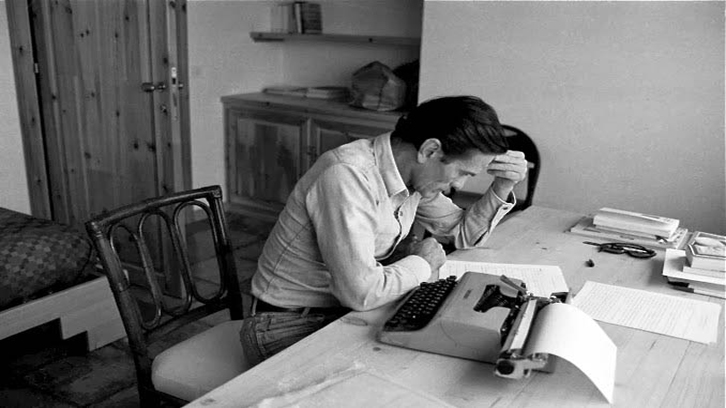The (other) body and the (other) writing: the last Pasolini into Lacan’s, Derrida, and Nancy’s view

The central point of this doctoral thesis has three main points: (1) It analyzes the themes of the body and the writing from the Lacanian psychoanalysis; (2) It analyzes it from Jacques Derrida and Jean-Luc Nancy’s contemporary philosophy; and (3) It analyzes the last years of the Italian poet Pier Paolo Pasolini to the view of the two first points mentioned above. Doing this implies thinking about the body and the writing as an other notion, meaning that it is not about the body and the writing as one would commonly think about them. It is not about the body as organic or the writing as an imprint, but the body that has nothing to do with its organs, one that is linked to something else that seems to not oblige the senses; the language; the thought. And the writing that does not respond to the senses, but precisely, to something else. From here, it must be essential the introduction to this notion of an other to approach the main ideas in the following investigation.
The relationship between these two notions -body and writing- is also the main thread in this doctoral dissertation, that completes itself with Pasolini’s work to respond to the principal hypothesis: Could it be thought, from Jacques Derrida, Jacques Lacan, and Jean-Luc Nancy’s perspective, as the writing linked to the body from a level other than the sense from Pasolini’s last work, meaning, from his last period?
We travel through the poet’s life and work to bring out the last ten years of his work, where there is an important change in his style, in the way he uses the language and images; in the place he gives to the body. Through this path, Pasolini’s early years are followed, especially one scene from his early childhood where he remembers precisely a word and an image that left a profound impact on himself for the rest of his life. It is about an image of the inside of the knee of a running child, and at that time, Pasolini named the overflowing sensation he felt at the moment. He called it: teta veleta. But it is also about an interpretation -that himself makes decades later- of his work and he considers the key to all of it: ab joy. Pasolini says he didn’t write anything else but this expression and he describes it as a drunkenness, a poetic rapture, the experience of happiness and pain at the same time. The relationship teta veleta - ab joy, is explored in the body of the thesis to propose a hypothesis related to it having in mind that the (other) body and the (other) writing are there, linked.
Finally, although reading in between the lines of the investigation, the topic of the unpresentable or unreductable is discussed and developed from the Lacanian psychoanalysis, Derrida and Nancy’s philosophy to elucidate about the same topic in the last Pasolini. Like this, it tried to respond to the questions of what and how does Pasolini do with something that cannot be represented by words and/or by images as well as what role the body plays in all this.
Universitat Autònoma de Barcelona
References
El (altre) cos i l’ (altra) escriptura: l'últim Pasolini a la llum de Lacan, Derrida i Nancy, doctoral thesis of Clàudia González (UAB), 2019.


